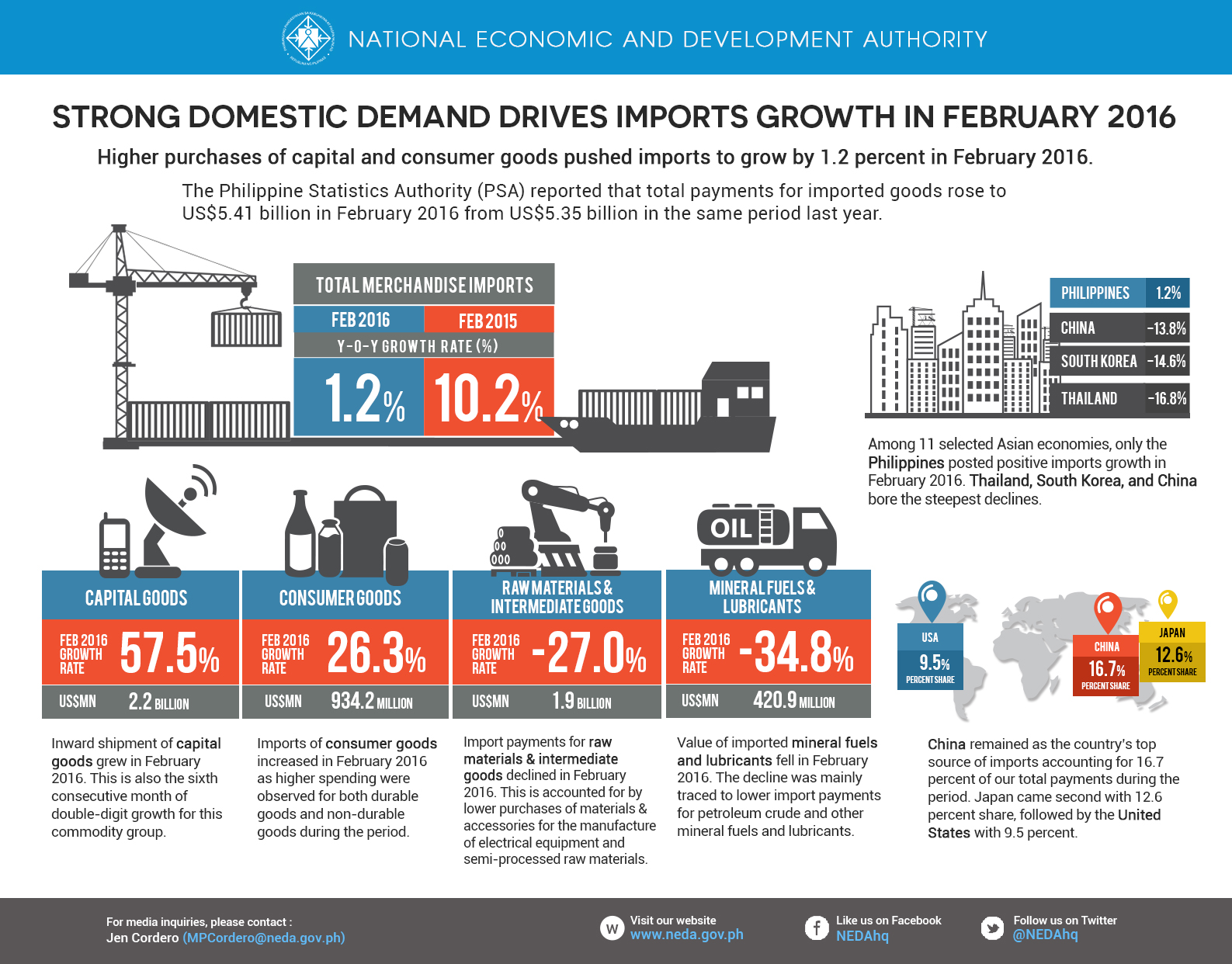
Higher purchases of capital and consumer goods pushed imports to grow by 1.2 percent in February 2016, according to the National Economic and Development Authority (NEDA).
The Philippine Statistics Authority (PSA) reported today that total payments for imported goods rose to US$5.41 billion in February 2016 from US$5.35 billion in the same period last year.
“This growth indicates that amid a global economic slowdown, domestic demand, especially investments, remains strong. This will likely continue to drive imports growth within the short term,” said Socioeconomic Planning Secretary Emmanuel F. Esguerra.
Moreover, among 11 selected Asian economies, only the Philippines posted positive imports growth in February 2016. Thailand, South Korea, and China bore the steepest declines.
With US$2.2 billion worth of imports, inward shipment of capital goods grew by 57.5 percent in February 2016. This is the sixth consecutive month of double-digit growth for this commodity group.
“The continued strong imports growth of capital goods shows the country’s attractiveness to both local and foreign investors, particularly in the manufacturing sector. This also indicates a robust economic activity that is primarily supported by the country’s strong macroeconomic performance. The robustness of growth is reflected in the continuous upgrade and affirmation of the country’s investment grade rating since 2013,” the Cabinet official said.
Likewise, imports of consumer goods increased by 26.3 percent to US$934.2 million in February 2016 as higher spending was observed for both durable goods (39.4%) and non-durable goods (13.9%) during the period.
On the other hand, purchases of raw materials and intermediate goods, and mineral fuels and lubricants decreased during the period.
“Government’s spending program needs to gain traction particularly in the infrastructure sector, which will require higher importation. Bottlenecks in Manila’s ports must also be given serious attention to further bring down the cost of imported goods for domestic businesses and consumers,” said Esguerra, who is also NEDA Director-General.
China remained as the country’s top source of imports accounting for 16.7 percent of our total payments during the period. Japan came second with 12.6 percent share, followed by the United States with 9.5 percent.
–END–



